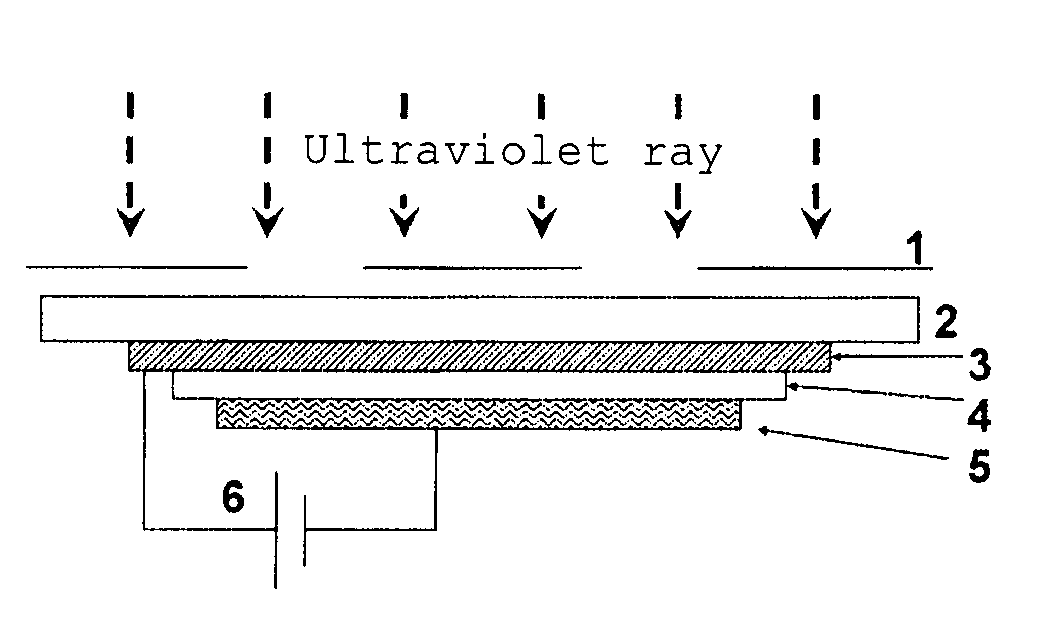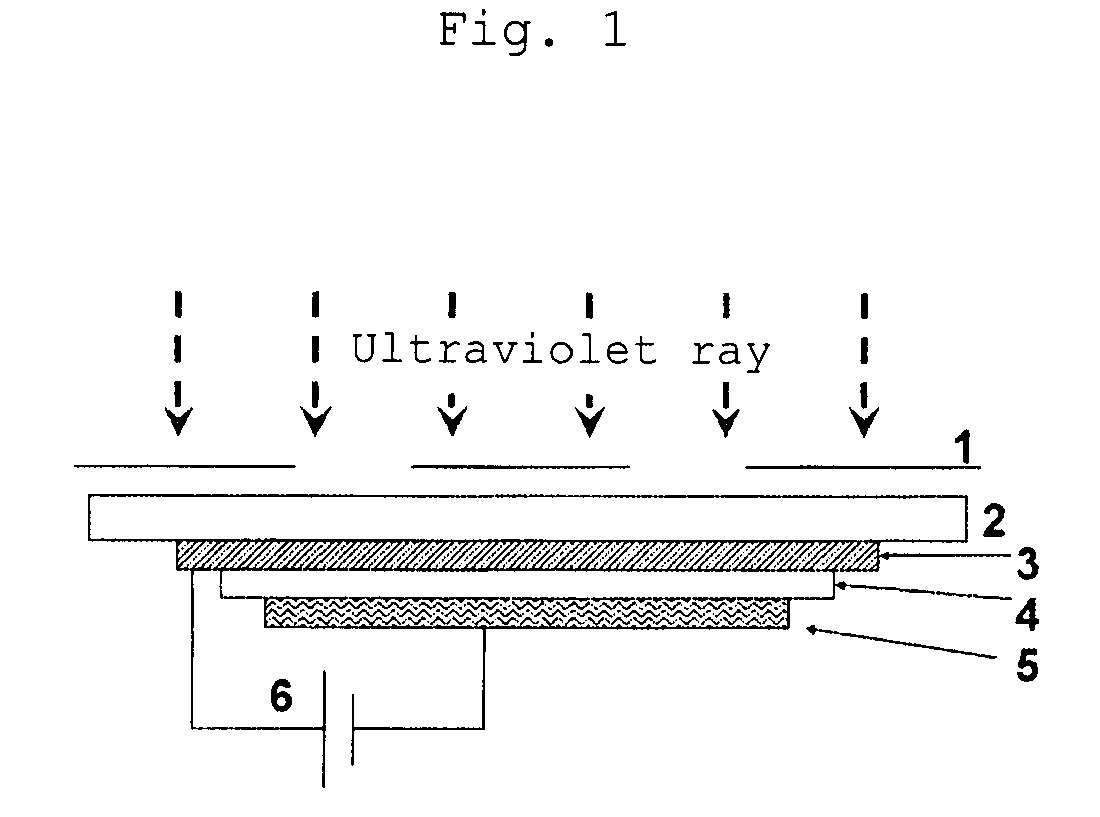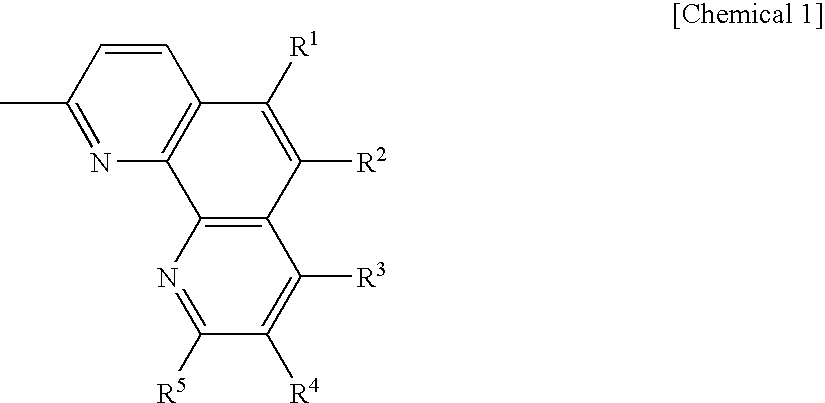Patterning method of organic electroluminescent device
a technology of organic electroluminescent and patterning method, which is applied in the direction of sustainable manufacturing/processing, instruments, and final product manufacturing, etc., can solve the problems of insufficient ultraviolet ray irradiation effect, difficult to efficiently perform patterning with high definition, and difficulty in high-definition patterning, etc., to achieve excellent design properties and enhance the productivity of organic el panels
- Summary
- Abstract
- Description
- Claims
- Application Information
AI Technical Summary
Benefits of technology
Problems solved by technology
Method used
Image
Examples
example 1
[0080]The organic EL device with a thickness of 10 mm×10 mm having the structure described below was manufactured. Specifically, a transparent electrode having formed thereon an ITO film with a thickness of 150 nm was formed on a glass substrate having a thickness of 0.7 mm. Formed on the transparent electrode were a molybdenum trioxide doped N,N′-di(naphthalene-1-yl)-N,N′-diphenyl benzidine (α-NPD) film with a thickness of 10 nm serving as a hole injecting layer, an α-NPD film with a thickness of 21 nm serving as a hole transporting layer, a film composed of tris(8-quinolynol)aluminum(Alq3) and a compound of 2,3,6,7-tetrahydro-1,1,7,7-tetramethyl-10-(thiazole-2-yl)-1H,5H,11H-[1]benzopyrano[6,7,8-ij]quinolizin-11-one (NKX-1595) expressed by
[0081]
with a thickness of 30 nm serving as a luminous layer, a DPB film having a thickness of 32 nm serving as an electron transporting layer, a film composed of DPB and mono(8-quinolynolate) lithium complex (Liq) with a thickness of 10 nm serving...
examples 2 and 3
[0087]An organic EL device was manufactured in the same manner as in Example 1 except that the thickness of the α-NPD film serving as the hole transporting layer was set to 50 nm (Example 2) or set to 80 nm (Example 3).
[0088]The observation and evaluation of each organic EL device after the irradiation of the ultraviolet ray were performed in the same manner as in Example 1.
[0089]As a result of the visual observation, in case where the ultraviolet ray was irradiated in 1.5 J / cm2 and where the ultraviolet ray was not irradiated, the whole surface of the device emits green light. When the ultraviolet ray was irradiated in 7.5 J / cm2 and 15.0 J / cm2, the green light emission is slightly dark only at the mask opening portion. Compared to Example 1, the green light emission became darker in Example 2, and further darker in Example 3. The green light emission was slightly darker in the case of the irradiation amount of the ultraviolet ray of 15.0 J / cm2 than the case of the irradiation amoun...
example 4
[0104]Ultraviolet ray in an amount of 15.0 J / cm2 was irradiated to the whole surface of the device manufactured in Comparative Example 1 in the same manner as in Example 1, while applying a bias (+7.5 V) between the electrodes of the device, and the brightness reduction was evaluated.
[0105]As a result, the ratio of the brightness after the irradiation of the ultraviolet ray to the brightness when the ultraviolet ray was not irradiated was 83%.
PUM
 Login to View More
Login to View More Abstract
Description
Claims
Application Information
 Login to View More
Login to View More - R&D
- Intellectual Property
- Life Sciences
- Materials
- Tech Scout
- Unparalleled Data Quality
- Higher Quality Content
- 60% Fewer Hallucinations
Browse by: Latest US Patents, China's latest patents, Technical Efficacy Thesaurus, Application Domain, Technology Topic, Popular Technical Reports.
© 2025 PatSnap. All rights reserved.Legal|Privacy policy|Modern Slavery Act Transparency Statement|Sitemap|About US| Contact US: help@patsnap.com



